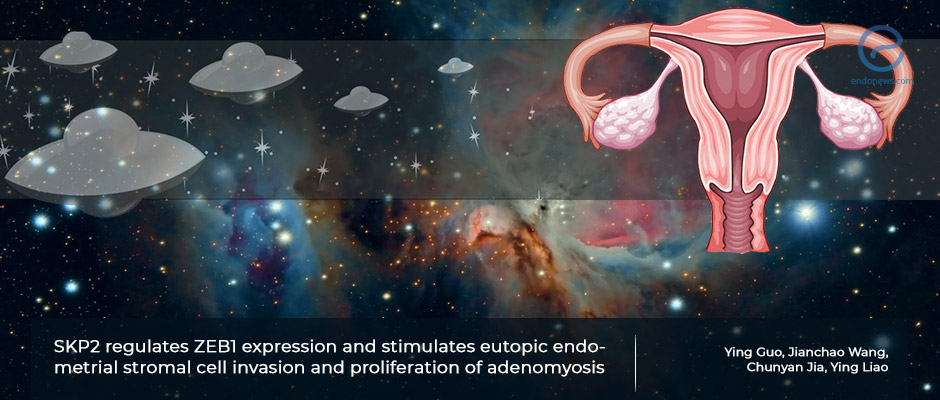Cancer invasion genes to explain invasiveness of adenomyosis
Jan 25, 2022
Knocking down invasion genes stops adenomyosis progression
Key Points
Highlights:
- Eutopic endometrium cells from adenomyotic patients act like cancer and walk-through myometrial lining to form adenomyosis.
Importance:
- The result of the study explains possible mechanisms of adenomyosis formation and the role of SKP2 and ZEB1 genes, which play role in of cancer invasion.
What's done here:
- Endometriotic samples of patients who had a hysterectomy for adenomyosis and subserosal myoma were used to form endometrial stromal cell cultures.
- Also, Immunohistochemistry for SKP2 and ZEB1 in normal uterine endometrium and adenomyosis have been applied before and after knocking down SKP2 with vector transfection.
- Cell invasion assay has been applied to show the effect of SKP2 on migration and invasion before and after being knocked down.
- The effect of knocking SKP2 on the ZEB1 expression level has also been evaluated.
Key Results:
- SKP2 levels are significantly higher on epithelia as well as stroma of both eutopic and ectopic endometria of women with adenomyosis.
- Expression levels of ZEB1 were significantly higher in eutopic and ectopic endometrium of adenomyosis when compared to the control group.
- Cell viability, invasion, colony formation, and migration have significantly reduced after transfecting cells to knockdown
- The protein and mRNA expression of ZEB1 was notably reduced in SKP2 knockdown cells in comparison to the cells without any transfection.
Limitations:
- The mechanism between ZEB1 and SKP2 should be identified to be used in further studies
- The feasibility of findings to be used in clinical studies should also be evaluated.
Lay Summary
Adenomyosis looks similar to endometriosis, but it is not the same. However, the invasiveness and migration patterns of both diseases have something in common.
The study conducted by Guo et al. questioned whether invasiveness genes that have already been studied in deep infiltrative endometriosis have also a role in adenomyosis formation. They have examined SKP2 and ZEB1 and their crossmatching roles on adenomyotic cell cultures.
Endometriotic samples of patients who had a hysterectomy for adenomyosis and for subserosal myoma were used to prepare endometrial stromal cell cultures. Also, immunohistochemistry for SKP2 and ZEB1 in normal uterine endometrium and adenomyosis have been applied before and after knocking down SKP2 with vector transfection. Cell invasion assay has been applied to show the effect of SKP2 on migration and invasion of cells before and after being knocked down. The effect of knocking SKP2 on the ZEB1 expression levels has also been evaluated.
SKP2 levels have been found to be significantly higher on epithelia as well as stroma of both eutopic and ectopic endometria of women with adenomyosis. Expression levels of ZEB1 were notably higher in eutopic and ectopic endometrium of adenomyosis when compared to the control group. Cell viability, invasion, colony formation, and migration have significantly reduced after transfecting cells to knock down The protein and mRNA expression of ZEB1 was notably reduced in SKP2 knockdown cells in comparison to the cells without any transfection.
The results showed a promising protocol for targeting adenomyosis formation but the feasibility of results to be mirrored on clinical studies should be evaluated in future studies.
Research Source: https://pubmed.ncbi.nlm.nih.gov/34844164
adenomyosis formation invasiveness genes SKP2 ZEB1

